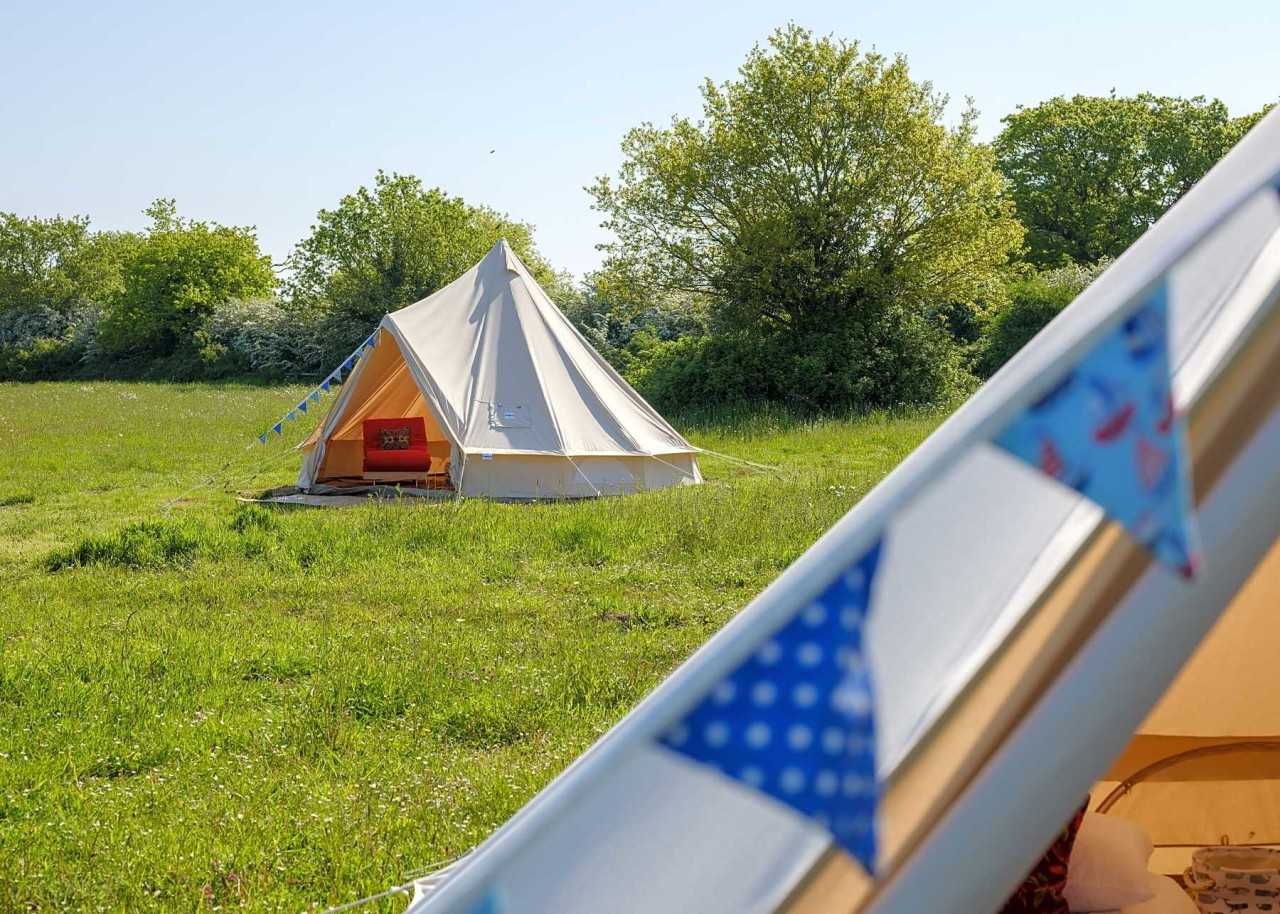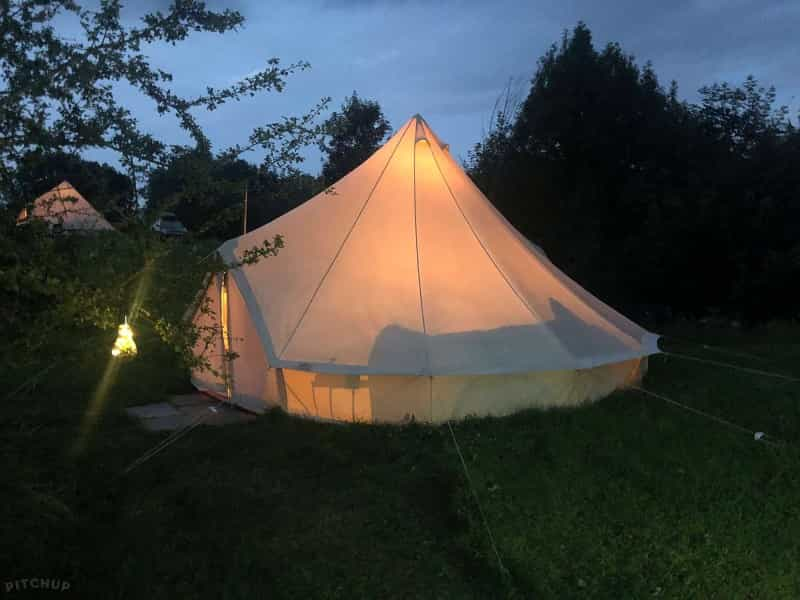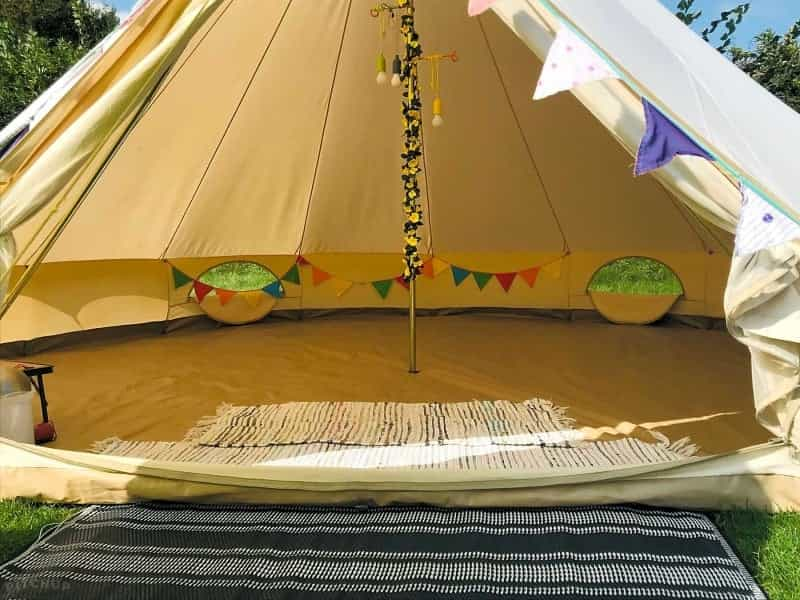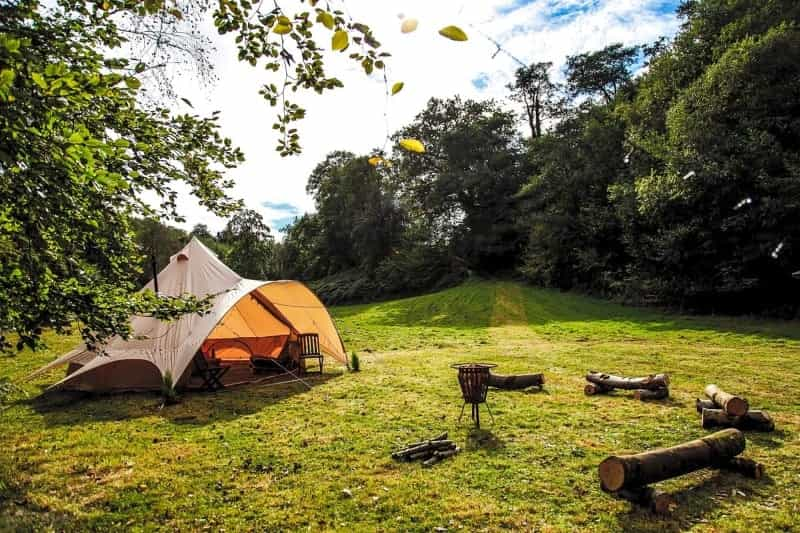Guide to buying your first bell tent
Bell tents are increasingly popular these days and make a great way to upgrade your family camping trip. But if you’ve had a look at models on the market, you’ll have realised that buying a bell tent can be a costly business. Below, we’ve explained what you need to think about before making such a big investment, and how to find a bell tent that’s right for you.

What is a bell tent?
As the name suggests, bell tents are shaped like an old-fashioned bell, with one central support pole and sloping sides that come together to create an easily recognisable shape. It’s a classic design that looks a little bit like a tipi (although these have several support poles rather than just one). Bell tents are traditionally made of canvas, but nowadays other materials are available too – we’ll examine this in more detail below.

Pros and cons of bell tents
Bell tents are an excellent choice for most campers who don’t mind spending that little bit more for a premium product. Bell tents look great both outside and inside, where they feel light and spacious. With various sizes available, they’re a top option for families and groups as well as couples and solo travellers.
However, while we’re big fans of bell tents, they’re not perfect for everyone, so we’ve listed the pros and cons below to help you make up your own mind.
Pros
-
Bell tents are among the easiest large tents to put up. The fact that there’s just one main central pole saves a lot of time, and with a bit of practice it’s possible to complete the full process in under a quarter of an hour.
-
A bell tent's simple design means that models with a diameter of under five metres can usually be put up by just one person.
-
Bell tents are sturdy structures that do well in windy conditions. Make sure that you’re properly pegged into the ground and you should have no issues. These tents were originally devised by the US army, so they were designed with durability in mind.
-
That durable design means that, when looked after properly, bell tents can last for many years, making them a very sustainable option.
-
Most bell tent materials are very breathable, so the temperature inside the tent should be self-regulating.
-
Bell tents have a large amount of floor space, so you can kit them out and accessorise them pretty much however you want. If you buy the right size of bell tent, there’ll definitely be space for items like camp beds, air mattresses, camping chairs or a folding table inside.
- In most bell tents, you can safely install a log-burning stove for extra comfort and warmth. Make sure that you have a tent made of flame-retardant material, a heatproof mat, a flue and plenty of ventilation.
Cons
-
Bell tents are typically bulkier and heavier than conventional tents, so they’re not a great option for people without a garage or loft to store one in. They might also take up quite a lot of space in your car boot if you have a smaller vehicle.
-
While they feel bright and airy, bell tents rarely have windows, although most do have side vents and a big door that can be folded back to let in fresh air.
-
If you like a bit of privacy on family holidays, it’s worth bearing in mind that bell tents typically don’t come with separate sleeping compartments/living spaces.
-
The light colour of most canvas tents means that bell tents may show up dirt and grass stains and require regular cleaning to keep smart.
- You may have to ‘weather’ your tent to make sure that the rain doesn’t get in (more on this below).

Types of bell tent
Canvas bell tents are made of 100% cotton and offer that classic glamping look. They’re also durable, breathable and robust, making them a very good all-rounder.
Lightweight canvas tents are cheaper (starting at around £250) and more portable, but they are more prone to tears and let through a lot of light. Heavyweight canvas tents are more expensive (expect to pay around £375 and above) but let through less light and fare better in harsher weather conditions.
It’s very important to ‘weather’ your canvas bell tent before use, especially if there’s a high chance of precipitation. Canvas bell tents will have been sewn together, and the tiny holes left by the needle will be large enough for water to get through. Getting your tent wet with a hose and then leaving it to dry completely is enough to solve this problem, as the threads will expand and contract when wetted and dried. You may have to repeat this process if the tent has spent a long time in storage between uses.
Polycotton bell tents are made from a mix of polyester and cotton. They look very similar to traditional canvas bell tents, but their mix of fabrics means they are mildew-resistant and generally easier to care for. They may also hold their colour for longer and are less prone to creasing than conventional canvas tents. However, most users find that they are less breathable, meaning they could feel stuffy at times and may be more prone to condensation on the inside of the tent. Basic polycotton tents are on the market from around £300.
Polyester bell tents are 100% synthetic tents, so they can be printed in a range of colours and patterns and are very easy to care for. They are also among the most lightweight bell tents available. They are also much less breathable than canvas or polycotton tents, although how much this matters to you depends on when and where you are planning on going camping. These are among the cheapest bell tents available, and it’s possible to find small models for under £250.
How to choose the right size of bell tent
While most tents are advertised for a certain number of users (e.g. a two-man or four-man tent), bell tents are generally measured by diameter. Smaller bell tents usually have a diameter of three metres, while the biggest are around eight metres. You’ll also find lots of different sizes in between.
Three-metre tents are good for couples, solo travellers or perhaps two adults and two children, but that leaves little room for luggage, camping furniture or privacy. A five-metre tent is probably the best all-round option for a family.
Planning to buy a bell tent
Unfortunately, the dimensions of bell tents means you’ll rarely be able to see the model you’re interested in fully set up in a shop – although it’s still worth keeping an eye out for display tents at specialist camping shows and county fairs.
If you’re in any doubt about what size or kind of bell tent to buy, the best thing to do is to stay in one for a couple of nights. Pitchup has a wide selection of pre-pitched bell tents to choose from, with both glamping and back to basics set-ups available.

Bell tent FAQs
Are bell tents warm?
Bell tents made of cotton canvas (or, to a slightly lesser extent, polycotton) are breathable, so you’ll stay cool in summer and warmer in winter. For extra warmth, in most tents it is safe to set up a wood-burning stove (however, you should always review the manufacturer’s advice before doing this).
Are wood-burning stoves safe in bell tents?
Always check the manufacturer’s instructions, but generally speaking, yes. A stove placed in the centre of a fire-retardant tent with an appropriate flue and heatproof mat is an excellent way to heat up in winter. Your tent may have a built-in chimney, or you may need a flashing kit and your own flue.
Are bell tents good in the rain?
All bell tents are waterproof, but cotton canvas tents may need to be ‘weathered in’ before use to avoid water ingress.
Are bell tents hard to set up?
Because there is just one central pole securing the structure, with practice bell tents are very simple to set up.